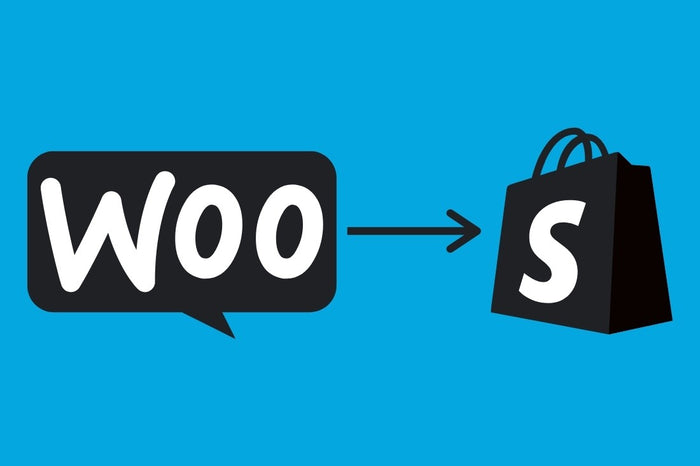E-commerce is becoming one of the most competitive arenas in retail.
There’s no question that the e-commerce market is worth the fight. In late 2019, approximately 28.1 million Canadians made purchases online, with monthly revenues valuing over 3 billion dollars.
If you’re an e-commerce business, you need to know how to compete for your market share.
And in e-commerce, you fight your biggest battles online. As you face off with your competition, you need a successful SEO strategy in place to win.
Successful SEO strategies are executed with purpose—if you do it right, you’ll win your way to the top of Google’s search engine results. If you slip up, in the time it takes to recover, your competition will happily earn a profit off of your mistakes.
How do you execute your e-commerce SEO strategy with purpose?
Here’s a good place to start: make sure your SEO strategy includes keyword mapping.
What is Keyword Mapping?

Keyword mapping is the process of assigning target keywords to specific pages on your website. It guides your content creation process and helps your target keywords drive more qualified traffic to your e-commerce website.
Keyword mapping is the backbone of SEO. Just like a backbone separates and organizes vertebrae, keyword mapping separates and organizes keywords.
In its most basic form, an e-commerce keyword map is a spreadsheet that helps you match a list of dozens, hundreds, or even thousands of keywords to the pages where they would be the most valuable.
Your e-commerce keyword map spreadsheet could look as simple as this:

Or it could be as complex as a multi-tab Excel spreadsheet. It all depends on the size of your website and the number of keywords you want to target.
Keyword mapping example: A Canadian coffee company

Let's imagine - for a moment - that you own an organic coffee e-commerce company that targets Canadian & US customers, a simple start to your keyword map could look something like this:

You'll notice - in this example - we have not duplicated the same keyword on multiple pages, as that is the main point of keyword mapping.
Here we've taken the primary keyword - Organic Coffee - and assigned it to home page; as that should be the most authoritative page for that term. We then narrow down to specific types of Organic coffee on the Medium Roast and Dark Roast pages.
Why Keyword Mapping is Important For E-Commerce Websites
Before we dig into keyword mapping basics, you need to understand why SEO keyword mapping is essential for your e-commerce website.
1. It informs your website architecture

Just like a grocery store is neatly organized by item categories, you need to lay out your website in a way that helps visitors and search bots flow through your site naturally—helping them find what they are looking for quickly.
Keyword mapping helps you create a logical website structure where each page has a clearly defined intent. The better you understand the intent of each page when you’re building it, the more visitors and search engines will understand it too.
For example, keyword mapping helps you better name your URLs. Instead of “coffeewebsite.ca/coffee-56wjrf5689729”, you can choose a clearer page URL like “coffeewebsite.com/organic-coffee/medium-roast.”
Now, your user understands where they are, and search engine crawlers better understand the purpose of that page.
On top of this, you can quickly implement a breadcrumb trail with the clean architecture you’ve laid out through keyword mapping.
2. Keyword maps help your website rank higher

Ranking high in SERPs (search engine results pages) is one of the goals of any SEO plan.
Google is notoriously good at giving the searcher what they are looking for within the first page of the Search Engine Results Page (SERP), so users rarely have to click for results beyond that page.
If your e-commerce page ranks lower, the chances of you gaining qualified traffic from search drop significantly with each page. This is where keyword mapping steps in.
An SEO keyword mapping strategy gives you the framework to do this. It helps you stay extremely focused on the content that you’re creating on a page-by-page basis, and the result will be better rankings sitewide.
3. It helps to convert more customers.

The quicker you can get your potential customers to EXACTLY what they are looking for, the more likely they are to buy from you. Keyword mapping reduces the friction & possible distractions in the path to purchase for your customers. This can have a significant, positive impact on your website's conversion rate.
Imagine you jump on Google and search for “men’s Parasuco jeans.”
If the result you click on takes you to “men’s jeans” or - even worse -"jeans," you then have to scroll through the page or click on filtering links to find what you’re looking for. It leaves you a little frustrated, doesn’t it? Especially since you knew the exact product that you were looking for to begin with.
If you had a proper keyword mapping strategy, the proper page (men’s Parasuco jeans) would have shown up higher in the search results, and your visitors would have been only one click away from making a purchase.
Because keyword mapping helps your page match your user’s search intent, it means less clicks to get them to the checkout.
4. It helps you avoid SEO blunders.

There are many common SEO problems that still happen today, but keyword mapping can keep you on a righteous path.
One of the most common errors is what is commonly known as keyword cannibalization. Keyword cannibalization is when more than one page on your website compete against each other for the same target keywords.
Let’s say that you have two blog posts that cover the same (or almost the same) topic. Google can’t tell which blog should rank higher for a search query.
Additionally, your backlinks and click-through rate get severely diluted over many posts instead of one, making both pages suffer in rankings as a result.
By setting up an e-commerce keyword mapping strategy, you can make sure your pages aren’t working against each other and lose out on rankings, and help direct your readers to the best possible result for their query.
A keyword map will also help you determine your internal linking strategy, as it lets you know what keywords on your site you should link to other pages. This is another positive signal to search engines. If you link all text that says "medium coffee" to the coffeewebsite.com/organic-coffee/medium-roast URL, it tells Google "Hey Google, this is what I believe is the most authoritative page on my site for the term "medium coffee."
If, however, you sometimes link "medium coffee" to that page, and sometimes link it to the organic-coffee page and sometimes link it to the home page and sometimes link it to the FAQ page, it tells Google that you're not sure what page on your site is all about medium coffee.
Keyword Mapping Basics For E-Commerce Websites
Now that you know the importance of SEO keyword mapping, let’s dive into the basics of how to make a keyword map.
Step 1 - Create Your Keyword Map Framework

To start, we’ll make a keyword map spreadsheet. It doesn't have to be pretty to be functional.
You can make your keyword map as straightforward or as complex as you would like, depending on how deep you want to get into your on-page SEO.
Your key column headings should include:
- Page URL
- Parent topic/Product category
- Page topic
- Primary keyword
- Secondary keyword(s)
- Meta title
- Meta description
You can also include other details such as Keyword Volume if you think that would help you prioritize your keyword mapping.
Don’t worry about filling this out yet. We’ll come back to it.
Step 2 - List your pages, products, and services
Next, add your list of existing website pages to your spreadsheet, including any additional pages you plan to add to your website.
If you haven’t built out your site yet, you should list all of the products and services you plan on listing on your website. Don’t forget to add core pages such as your home page, about page, and contact page to your list.
This won’t be your final sitemap, as your keyword research may inspire a few changes, but it’s a good starting point.
Tip: You can copy and paste your website’s page sitemap into your spreadsheet to save time. You can usually find your sitemap at [yourwebsite.com]/sitemap.xml.
Step 3 - Do your keyword research
Inspired by your list of pages, start building a keyword list of anything people could search to find your business. For now, this should be a separate tab on your spreadsheet (or separate sheet altogether).
These could be general searches related to your business (e.g. organic coffee company) or searches related to a specific product (e.g. medium roast organic coffee beans).
The goal here is for this to be a free-flowing brainstorm. If you come up with keywords that relate to your business but don’t necessarily relate to one of your existing pages, you should still add them to your list. We’ll map keywords to specific pages later.
There are many free or free-to-try resources that can help you build out your keyword list. Moz.com and SEMrush are probably the two best known tools in the SEO industry. However, there are some other players that do a really nice job at helping you identify keywords that you may not have heard of:
Google’s “Related Searches" section

Google is a great first stop to find similar search terms to your target keyword. That's because it has a built in suggestion tool that gives you popular search queries that are closely related to what you searched for. Click through each relevant link and see what phrases and keywords are ranking higher.
Cost: Free
Google Ads Keyword Planner

Google’s Keyword Planner is a free tool buried within Google Ads that offers some great insights into keyword ROI. With real-time data coming straight from Google, you can see the average monthly searches for each particular keyword, and see how much advertisers are bidding for each keyword.
One thing you will find with the Google Keyword Planner is that it tends to group similar keywords together. For example, organic coffee and organic coffees will be merged into one result (organic coffee). That's because Google continues to improve their ability to match keyword variations to the base keyword.
Cost: Free - However, you need to create a Google Ads account - even if you don't run any Google ads - to access the tool.
AnswerThePublic

AnswerThePublic is a fun keyword research tool that gives you access to raw search insights directly from search engines. It’s an especially great tool for finding long-tail keywords such as popular questions.
Cost: Free and Pro options.
Jaaxy

Jaaxy’s Keyword and Research Platform is easy to use and gives you thousands of keyword ideas within seconds. Like Soovle, it can also provide you with keyword ideas that you may not find with other tools. It also gives you valuable data on every keyword that it generates.
Cost: Free (for the first 30 searches).
Step 4 - Start keyword mapping

Now’s the fun part!
For each page, choose the keywords from your list that most apply to that page. You should only target 2-3 keywords per page, and the keywords you choose should relate directly to the search intent of the page.
Here’s the key: Do not use the same target keyword on more than one page. That will result in the keyword cannibalization we discussed above. For example, you wouldn’t want to target “organic coffee” on every page of your site, as that will confuse search engines as to which page they should prefer to display on your site for that term.
Here’s an example using your medium roast coffee page:
- Page URL: /organic-coffee/medium-roast)
- Parent topic: organic coffee
- Page topic: medium roast
- Primary keyword: medium roast coffee
- Secondary keyword(s): medium roast organic coffee beans
- Meta title: Medium Roast Coffee | Organic Medium Roast Coffee Beans
- Meta description: For the best organic medium roast coffee beans, check out My Coffee Company.
And here's how it would look in your fancy spreadsheet:

Step 5 - Add new pages and blogs as needed
Once you’ve gone through your entire page and keyword lists, you may have some very relevant and popular keywords leftover that weren’t mapped to a page.
If the keyword has significant search volume, you should consider adding a new page or blog post to your site in order to target that keyword. It's a great way to inspire your content marketing strategy!
For example, if “organic fair trade coffee” is a high-volume search, but doesn’t relate directly to any of your current pages, you may want to write a blog post about it or create a page on your site that explains your company's fair trade practices, linking to your best selling fair trade products.
Get started with your e-commerce keyword map
It’s time to start building out your e-commerce keyword map.
The more relevant information you include in your keyword map, and the more you rely on your keyword map for content, site architecture, and internal linking, the better your e-commerce website will perform.
The wonderful thing about keyword maps is that they are flexible in design. Use it to better plan and understand your e-commerce SEO strategy, and you’ll be on your way to a higher-performing website in no time!
Need help creating & implementing a keyword map for your Shopify Store? Marketplace Solutions can help!! Contact Us to learn more.






